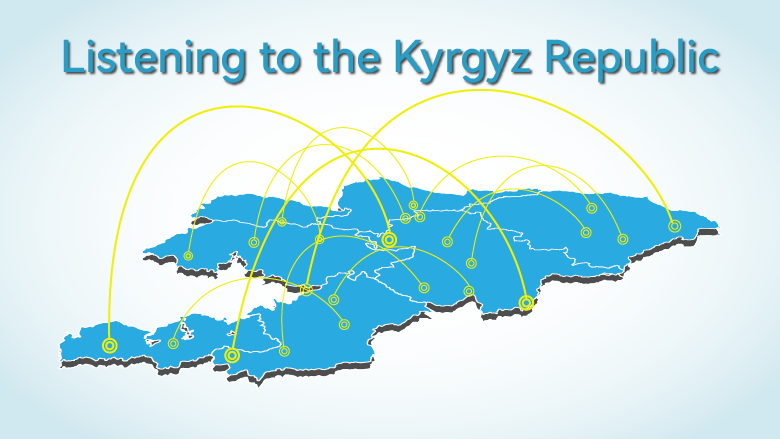Sampling Procedure
The sample of the L2KGZ is a subsample of the 2021 baseline survey. The 2021 baseline survey was conducted face-to-face interviews with a nationally and urban/rural representative sample of 4,000 households from 200 PSU by random walk method. The PSU for the L2KGZ baseline survey were villages (ayils) for rural areas, as well as streets for urban areas, which was the lowest-level of administrative unit in Kyrgyz Republic.
The sample was distributed nationally in the Kyrgyz Republic using a standard 2-stage approach wherein stratification ensured sufficient sample distribution by region and rural/urban areas. Clusters were randomly selected proportionate to size, and households randomly selected within each cluster.
The sampling plan of L2KGZ is represented at the national, regional (oblast), and urban/rural levels and based on official population data prepared and published by the National Statistical Committee of the Kyrgyz Republic (NSC). The sample was grouped into primary sampling units (PSUs), which are geographical areas - region and rural/urban areas. The consulting firm conducted 20 interviews in each PSU. Overall, the 200 PSUs sampled were divided according to the population size of each region, urban and rural areas. Then within each urban and rural area, each PSU was randomly selected with a probability proportional to size (PPS). In the baseline, households were asked to provide phone number of their most knowledgeable member for future contact during short phone interviews (CATI - Computer Assisted Telephone Interview).
After completion of the 2021 baseline survey, L2KGZ monthly interviewers began regularly calling a randomly selected panel of 1,500 households over the phone to conduct short interviews, following a set monthly schedule agreed to by the participating household. Selection was conducted on the basis of the design for the baseline survey: either 5 or 6 households were selected in each PSU. This design ensured that the geographic spread of participants remained as dispersed as in the baseline survey, and minimized the intracluster correlation of respondent characteristics to the best extent possible.
Weighting
In each round of L2KGZ Phone Survey, the sampling weights from the L2KGZ baseline survey are adjusted to ensure that the phone survey sample remains (i) comparable to the baseline sample, and (ii) representative at the strata level. This adjustment process automatically corrects the sampling weights to account for strata population distributions, even if the target of 1,500 households per round is not fully achieved or is exceeded.


